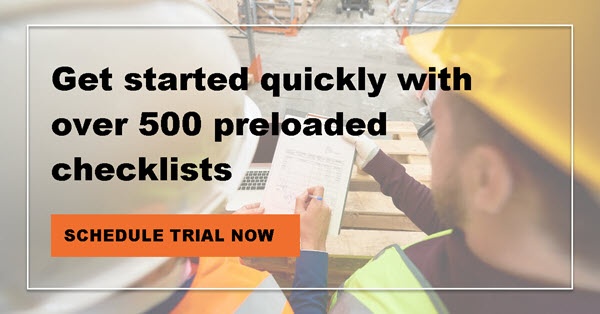Many builders use construction checklists to verify critical milestones in the construction site and construction projects as a whole. Construction checklist templates standardize how work is performed implementing safety measures and construction processes ensuring the job is completed through to successful implementation for optimal productivity per the builder's quality standards.
A professional construction checklist, tailored for the construction industry and construction project management, offers a structured approach. It can be customized to suit specific jobs and team members, providing flexibility in its level of detail. This checklist can be utilized by individuals in various positions within the builder's organization, including Trade, Construction to Operations to even Sales.
But once a construction checklist is in place, it must be used to be effective.
Sometimes that can be a challenge, especially if there is a disconnect between the builder's leadership and the people performing the work. Implementing a new checklist - or a QC checklist system for the first time - can feel intimidating to the user.
Initially, it can be viewed as “micromanaging their job”, “corporate red tape” or even “busy work”, rather than a tool which facilitates optimal productivity for the entire construction process.
How to Implement a Building Checklist
So, when implementing QC construction checklist for any construction phase, there are three steps to create buy-in and improve the roll-out process.
- Explain the purpose of this checklist & expectations
- When introducing the checklist, be clear about the intent: This construction checklist is designed to reduce errors, reduce cycle time, reduce call backs, etc. Also explain how the results will be monitored and recorded. Are there reports that are updated with this info? Will management audit its usage? Finally, don’t mince words about compliance.
There are consequences for those who "pencil whip through" or just outright ignore construction management processes and managing construction projects. These consequences can affect both the builder, resulting in a reduction in quality and brand reputation, and the user, potentially leading to a reprimand or job loss. On the other hand, positive reinforcement can be provided as an incentive for those who properly utilize the checklist, especially if it consistently generates positive results. The purpose of a checklist is to ensure the effective implementation of construction management processes and the successful management of construction projects.
- Double check that everyone understands the content
- Comprehension is key from the start. Users must fully understand the items on the checklist at introduction. That’s the time for questions and explanations. Once the checklist is rolled out, it needs to perform. Otherwise, errors and defects continue, the QC Program fails, and the quality of the completed project suffers.
It goes without saying that the checklist must be accurate and complete at roll out as well. Vague line items can be misinterpreted, if not ignored all together. Outdated and irrelevant items will reinforce the perception that the construction checklist is just busy work.
- Provide a real-life example
- Finally, during the introduction, tell a story that explains why this checklist is necessary. People relate to stories. They respond to real life examples, opposed to corporate edicts.
A story about homeowners having to put up with their new home being ripped apart to repair a mistake that could've been prevented during the construction project involves the utilization of a construction project checklist and effective project management. This highlights the importance of incorporating inspections, checklists, and project management to avoid such unfortunate incidents. Implementing a construction project checklist helps ensure thoroughness and prevents oversights, while efficient project management contributes to the successful execution and completion of the project.
If required, create multiple construction checklists. However, once the construction checklist has been implemented, the results must be monitored and communicated to the users.
Safety checklists, including the construction project management checklist, as well as different types of construction checklists, are essential tools for effectively managing construction projects. These checklists, tailored to specific aspects of the project, play a crucial role in addressing safety standards, stakeholders, contractors, planning, hazards, risks, resources, efficiency, complex activities, improvement, overall performance, and accountability. By utilizing various types of construction checklists, project managers can ensure a comprehensive approach to project execution and enhance project outcomes.
If warranty is seeing a decrease in claims due to the QC checks, celebrate it. If a trade has decreased call backs, get the word out. Positive results will boost trust in the QC checklist and ensure continued usage.


